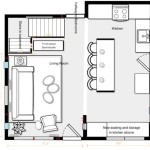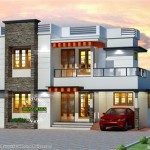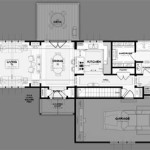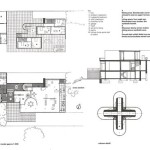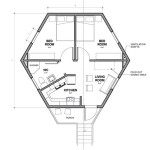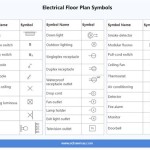Kerala Style House Plan and Elevation: A Comprehensive Guide
Kerala style house plans and elevations are characterized by a unique architectural aesthetic deeply rooted in the rich cultural heritage of the South Indian state of Kerala. These designs blend traditional elements with modern functionality, creating homes that are not only visually appealing but also practical for the region’s climate and lifestyle. Understanding the key features and principles behind Kerala architecture is crucial for anyone considering building or renovating a house in this style. This article will provide a comprehensive overview of Kerala style house plans and elevations, covering essential aspects from design principles to common materials and contemporary adaptations.
The architectural style of Kerala houses has evolved over centuries, influenced by various factors including the climate, the availability of materials, and the social and economic conditions of the region. Traditional Kerala homes, known as "Nalukettu," were designed as courtyard houses with interconnected rooms surrounding a central open space. This design facilitated natural ventilation and lighting, crucial in the humid tropical climate. The use of locally sourced materials like wood, laterite stone, and clay tiles played a vital role in shaping the unique character of Kerala architecture. Furthermore, the intricate woodwork, sloping roofs, and wide verandahs are defining elements that continue to inspire contemporary Kerala style house plans and elevations.
Key Characteristics of Kerala Style House Plans
Kerala style house plans typically prioritize functionality, ventilation, and a connection with nature. Several distinct characteristics define these designs:
Open Layout and Courtyard (Nalukettu): Traditional Kerala houses often feature a central courtyard, or "Nalukettu," which serves as the focal point of the house. The courtyard provides natural light and ventilation to the surrounding rooms, creating a comfortable and airy living environment. While modern adaptations may not always include a full-fledged courtyard, the principle of open spaces and interconnected rooms is often retained to maintain a sense of spaciousness and flow.
Sloping Roofs: One of the most recognizable features of Kerala architecture is the sloping roof, typically covered with clay tiles. These roofs are designed to efficiently shed rainwater, protecting the house from the heavy monsoon rains that are common in Kerala. The angle of the slope is carefully calculated to ensure proper drainage and prevent waterlogging. Additionally, the overhanging eaves provide shade, reducing the heat gain inside the house during the hot summer months.
Verandahs and Balconies: Wide verandahs and balconies are integral parts of Kerala style house plans. These outdoor spaces provide a transitional zone between the interior and exterior, offering a place to relax, socialize, and enjoy the surrounding landscape. Verandahs also serve as a buffer against the sun and rain, helping to regulate the temperature inside the house. In modern designs, balconies are often incorporated on upper floors to maximize views and natural light.
Oriented Towards Vastu Shastra Principles: Traditional Kerala homes are often designed according to the principles of Vastu Shastra, an ancient Indian system of architecture that emphasizes harmony between the building and its environment. Vastu Shastra guidelines dictate the orientation of the house, the placement of rooms, and the use of materials to ensure positive energy flow and overall well-being. While not all modern Kerala style houses strictly adhere to Vastu Shastra, many architects incorporate its basic principles to create a balanced and harmonious living space.
Use of Natural Materials: Kerala architecture historically relies heavily on locally available natural materials such as wood, laterite stone, and clay tiles. Teak wood is particularly prized for its durability and aesthetic appeal, and is often used for structural elements, doors, windows, and furniture. Laterite stone, with its distinctive reddish-brown color, is used for the foundation and walls. Clay tiles are the traditional roofing material, providing excellent insulation and water resistance. Modern designs may incorporate concrete and steel for structural integrity, but often retain the use of natural materials for cladding and finishing to preserve the authentic Kerala aesthetic.
Key Aspects of Kerala Style House Elevations
The elevation of a Kerala style house plays a crucial role in defining its overall aesthetic appeal. The facade of the house typically reflects the architectural principles and materials used throughout the design. The following are some key aspects to consider when planning the elevation of a Kerala style house:
Emphasis on Symmetry and Proportion: Traditional Kerala architecture emphasizes symmetry and proportion in the elevation. The facade of the house is typically balanced and harmonious, with repeating elements and carefully considered proportions. This creates a sense of visual order and stability. While modern designs may incorporate asymmetrical elements, the underlying principle of balance is often maintained.
Intricate Woodwork: Intricate woodwork is a hallmark of Kerala architecture, and it is prominently featured in the elevation of the house. Elaborately carved wooden doors, windows, and railings are common elements, adding a touch of elegance and craftsmanship to the facade. Traditional motifs, such as floral patterns and geometric designs, are often incorporated into the woodwork. In modern designs, CNC-cut panels and laser-cut screens may be used to create intricate patterns with greater precision and efficiency.
Use of Color: The color palette of a Kerala style house elevation typically reflects the natural materials used in the construction. Earthy tones, such as browns, reds, and creams, are commonly used for the walls and roof. White is often used for the trim and detailing, creating a contrast that highlights the architectural features of the house. Bright colors may be used sparingly to add accents and visual interest, but the overall effect is typically one of understated elegance.
Projecting Elements and Layers: Kerala style house elevations often incorporate projecting elements, such as balconies, verandahs, and eaves, which create depth and dimension on the facade. These elements not only enhance the aesthetic appeal of the house but also serve practical purposes, such as providing shade and protection from the rain. The layering of architectural elements adds visual complexity and interest to the elevation. Modern designs may incorporate cantilevered balconies and other innovative structural solutions to create dramatic and eye-catching elevations.
Landscaping and Integration with Nature: The landscaping around a Kerala style house is an integral part of the overall design. The elevation of the house should be carefully considered in relation to the surrounding landscape, creating a seamless transition between the built environment and the natural environment. Lush greenery, flowering plants, and water features are often incorporated into the landscaping to enhance the beauty of the house and create a peaceful and inviting atmosphere. The use of native plants is particularly encouraged, as they are well-suited to the local climate and require less maintenance.
Modern Adaptations of Kerala Style Architecture
While traditional Kerala architecture remains a source of inspiration, contemporary designers are constantly exploring new ways to adapt and reinterpret its principles for modern living. These adaptations often involve the use of new materials, technologies, and design concepts while retaining the essence of the Kerala style. Some of the key trends in modern adaptations include:
Minimalist Design: Modern Kerala style houses often feature minimalist designs that emphasize clean lines, simple forms, and uncluttered spaces. This approach retains the open layout and connection with nature that are characteristic of traditional Kerala architecture, while incorporating modern aesthetic sensibilities. The use of neutral colors, natural light, and minimal ornamentation is common in these designs.
Sustainable Design: Sustainability is a growing concern in modern architecture, and Kerala style houses are no exception. Modern designers are increasingly incorporating sustainable features, such as solar panels, rainwater harvesting systems, and energy-efficient appliances, into their designs. The use of locally sourced and recycled materials is also encouraged. Furthermore, the natural ventilation and shading provided by traditional Kerala architecture contribute to energy efficiency and reduce the environmental impact of the house.
Integration of Technology: Modern Kerala style houses often incorporate smart home technology to enhance comfort, convenience, and security. Automated lighting, climate control, and security systems can be seamlessly integrated into the design. The use of smart materials, such as self-cleaning glass and energy-efficient windows, is also becoming increasingly common.
Contemporary Materials: While traditional materials like wood and laterite stone remain popular, modern Kerala style houses often incorporate contemporary materials such as concrete, steel, and glass. These materials can be used to create innovative structural solutions and to introduce a modern aesthetic to the design. However, the use of these materials is typically balanced with the use of natural materials to maintain the warmth and character of the Kerala style.
Vertical Expansion: With increasing land scarcity in urban areas, vertical expansion is becoming a common trend in Kerala style house design. Modern designers are exploring ways to create multi-story houses that retain the essence of the Kerala style while maximizing space and functionality. This often involves the incorporation of open staircases, vertical gardens, and rooftop terraces to create a sense of spaciousness and connection with nature.
In conclusion, Kerala style house plans and elevations offer a unique blend of tradition and modernity, creating homes that are both aesthetically pleasing and functionally efficient. By understanding the key characteristics and principles of Kerala architecture, homeowners and designers can create houses that are perfectly suited to the climate, lifestyle, and cultural heritage of the region. The ongoing adaptation and evolution of Kerala architecture ensure that it will continue to inspire and influence house design for generations to come.

Kerala Style House Design East Facing Home Plan With Elevation And Designs Books

Fascinating Kerala Style Single Storied House Plan And Its Elevation Story H Model Plans With Pictures Architectural

Kerala Style House Elevation Design 2600 Sq Ft 242 M 289 Square Yards Publish 2 Y Home Architecture Styles

Kerala Style House Plans Front Elevation

Contemporary House Plan Elevation In Kerala Style

Kerala Style Three Bedroom Low Budget House Plans Under 1300 Sq Ft I Total 4 Small Hub

Simple Style 3 Bedroom Kerala Home Elevation With Floor Plan Planners

40 House Plan Front Design In Kerala Style 1600 Sq Ft 3 Bhk

1800sqft Mixed Roof Kerala House Design Plans Designs Floor And Elevation With Photos Model Plan

Kerala Style House Plans Low Cost Small In With Photos

